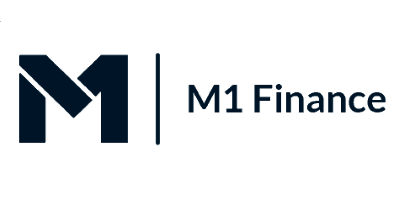As a new investor, it’s a good idea to look beyond individual stocks and consider buying funds that will give you ownership of more companies at a time.
If this sounds up your alley, two types of financial products you should look into exchange-traded funds (ETFs) and mutual funds. Adding these types of financial products to your portfolio can enhance your earning potential and reduce risk.
Exchange-Traded Funds (ETFs)
What are ETFs?
An ETF is an investment fund that tracks a collection of securities like stocks or commodities. Many ETFs are based on specific indexes, like the S&P 500, the Nasdaq Composite, or the Dow Jones Industrial Average (the Dow).
How ETFs Work
ETFs are traded just like individual stocks. Unlike index funds, which are bought and sold based on their price at the end of each trading day, ETFs are traded continuously throughout the day.
Most ETFs are passively managed, but some can be actively managed as well. ETFs typically come with lower expense ratios. But all funds are different, so do your due diligence and read the fine print before deciding whether to buy an ETF.
Where to Buy ETFs
Just like stocks, ETFs need to be purchased through licensed and accredited brokerage firms. All you have to do is create an account on a broker’s site and fund it. Once you have money in your account, you can research ETFs and invest as you see fit.
Picking the Right ETFs
There are around 2,000 ETFs offered on U.S. exchanges today, and more than 5,000 across the globe. As such, you’ll need to do your due diligence when trying to figure out which to add to your portfolio.
With that in mind, here are some things to look for when browsing ETFs.
1. Composition
Just because an ETF is reasonably priced and has a history of success doesn’t necessarily mean it’s the best option.
Take a careful look at the fund and analyze the individual holdings. It’s important to look at how the stocks and bonds are weighted and the level of market exposure they provide.
2. Expense Ratio
As for the cost of the fund, look at the ETF’s expense ratio or the amount that goes towards investing versus operational or marketing purposes.
The lower the expense ratio, the better. Many of the leading discount brokerages have ETFs with expense ratios that are less than 0.25%. If the expense ratio for an ETF is higher than 0.50%, there is probably a less expensive option than the fund you are looking at.
3. Tracking Error
A tracking error, also known as active risk, refers to the difference between the ETF’s position and the benchmark it was designed to track or beat.
The Pros and Cons of ETFs
| Pros | Cons |
| Diverse access to stocks across different sectors | Risk for market volatility |
| Very easy to trade | Bought and sold at market price |
| Dividend yields | Commissions and trading fees |
| No minimum investment |
Mutual Funds: An Overview
What Are Mutual Funds?
A mutual fund is a collection of securities purchased from a pool of money contributed by a group of investors.
Mutual funds can offer many types of securities, including bonds, money market accounts, and stocks. In other words, they can be a mix of investments and securities, offering varying levels of risk and earning potential.
When you invest in a mutual fund, you spread your money around by leveraging a group of high-performing stocks. Instead of just buying shares in a company or two, you spread the risk around by getting slices of many companies.
Active vs. Passive Management
When you invest in a portfolio of securities, you can choose to invest in assets that are actively or passively managed.
Since index funds track a certain market segment or benchmark, they’re considered passively managed. The fund doesn’t require the hands-on involvement of a fund manager. It’s entirely based on how different markets perform.
A mutual fund, on the other hand, is actively managed. Its purpose is to beat an index or market segment, and fund managers are charged with figuring out how to make that happen. In other words, a portfolio manager builds a list based on an index or industry segment and then modifies it to try and beat the market.
Since mutual funds require a hands-on approach, they typically come with higher fees. At the same time, they can also be riskier than index funds because fund managers can make mistakes when allocating resources.
How to Buy Mutual Funds
There are a few different ways to buy mutual funds. The most cost-effective method is purchase funds directly from mutual fund companies. Taking this approach can avoid brokerage fees and sales commissions, meaning more of your investment dollars go toward earning money instead of paying third-party middlemen.
That said, it can be more convenient to buy mutual funds through a brokerage account from a company like Charles Schwab or Fidelity. Just keep in mind that you could wind up paying more in administrative fees if you take this approach.
Minimum Investments for Mutual Funds
Most mutual funds have minimum investment requirements that range from $500 to $5,000. And some can be much higher—stretching up to the $1 million range or more.
That said, there are some funds that don’t.
Either way, new investors should shop around for funds that don’t have high minimum investment requirements to avoid going all-in on a particular fund. This can reduce risk and increase earning potential.
The Pros and Cons of Mutual Funds
| Pros | Cons |
| Liquidity | Tax inefficiency |
| Portfolio management | Higher risk |
| Dividend reinvestment | Transaction fees from brokers |
| Potential for human error |
Frequently Asked Questions
Below are answers to some of the most frequently asked questions I receive about ETFs and mutual funds.
Are ETFs tax efficient?
ETFs are subject to capital gains taxes. You’ll also have to pay taxes on dividends. However, ETFs have great tax efficiency because they have limited turnover and fewer capital gains than funds with active management.
Are mutual funds index funds?
Some mutual funds are set up as index funds. However, the vast majority are designed to follow specific strategies while index funds are usually geared to track market indexes.
What are capital gains taxes?
Capital gains taxes refer to taxes that are applied when you sell an investment for profit.
One of the top reasons why investors set up retirement accounts like individual retirement accounts (IRAs), Roth IRAs, and 401ks is because they can prevent you from paying capital gains taxes until you make distributions.
Capital gains taxes are determined by how long you hold the investment in your account. At the time of this writing, short-term investments (i.e., less than 12 months) are taxed at 30% while long-term investments (i.e., more than 12 months) are taxed at 15%.
What does market price mean?
Market price refers to the price that shares can be bought and sold during normal trading hours.
How do limit orders work?
When you make a limit order, you agree to buy or sell a stock at a certain price or better. With a sell limit order, the order is completed only at a limit price or higher. When you buy a limit order, the order is executed at the limit price or lower. It’s an easy way to make sure you buy and sell at the prices you’re comfortable with.
How do bid/ask spreads work?
A bid/ask spread is the difference between the highest price a buyer will pay for a certain asset and the lowest price that a seller will agree to. Generally speaking, securities that aren’t often traded have larger spreads.
What is a socially responsible fund?
One thing that investors often struggle with when buying mutual funds is having partial ownership in companies that they object with.
A socially responsible fund is a financial instrument that only holds securities in companies that adhere to specific moral, religious, environmental, or social beliefs.
When buying a fund, it’s important to consider that socially responsible accounts can sometimes bypass lucrative investments due to restrictions. For example, a socially responsible fund may avoid doing business with a defense contractor or an energy company. As an investor, you have to determine what you’re comfortable supporting ahead of time.
What should I look for in a fund prospectus?
Buying an investment like an ETF or mutual fund can be confusing because there’s a lot of literature that you’ll have to browse through. Take my word for it: You’ll be much better off doing your research ahead of time. Blindly purchasing a fund is a bit like buying a car without reading any reviews. Maybe you’ll luck out, and maybe you won’t. Is it really worth the risk?
A prospectus is an official document required by the Securities and Exchange Commission (SEC) that outlines all of the details about any public investment offering.
If you’re thinking about investing in a mutual fund or an ETF, take a close look at the prospectus for critical information about investment objectives, overall performance, fund management, fees, and other expenses.
The prospectus will let you know about any important costs that you will have to part with when trading funds. Oftentimes, investors are left scratching their heads when they get hit with heavy fees after trading because they failed to read the prospectus. If you ask me, it’s an easily preventable mistake.
In addition, the prospectus will outline the risks of the investment—as well as whether the fund is socially responsible.
The Bottom Line
Mutual funds and ETFs are useful for both short-term or long-term investing. Both options can help you access the stock market while reducing risk and providing broad market exposure. As a result, both types of funds are both excellent investment choices for investors of all ages and financial situations.
The key differences between mutual funds and ETFs largely have to do with fees, management policies, and how the funds are structured. ETFs are usually low-cost mutual fund alternatives, and they have less human intervention.
If you are thinking of buying mutual funds or ETFs, consider talking to a financial planner who can walk you through the selection process. A financial advisor will be able to help guide you about important things like pricing, performance, and risk.
The good news is that mutual funds and ETFs are much lower risk than buying individual stocks. Just make sure to read each fund’s prospectus before buying so that you know what you’re getting into ahead of time. Otherwise, you could get hit with unexpected fees. And if there’s anything I don’t like about investing, it’s unnecessary fees.
As you continue on the journey to financial independence, I’d encourage you to ask yourself whether it makes sense to add ETFs and mutual funds to your portfolio. Spread the risk around, be patient, and good things will follow.
Read More:






No comments yet. Add your own